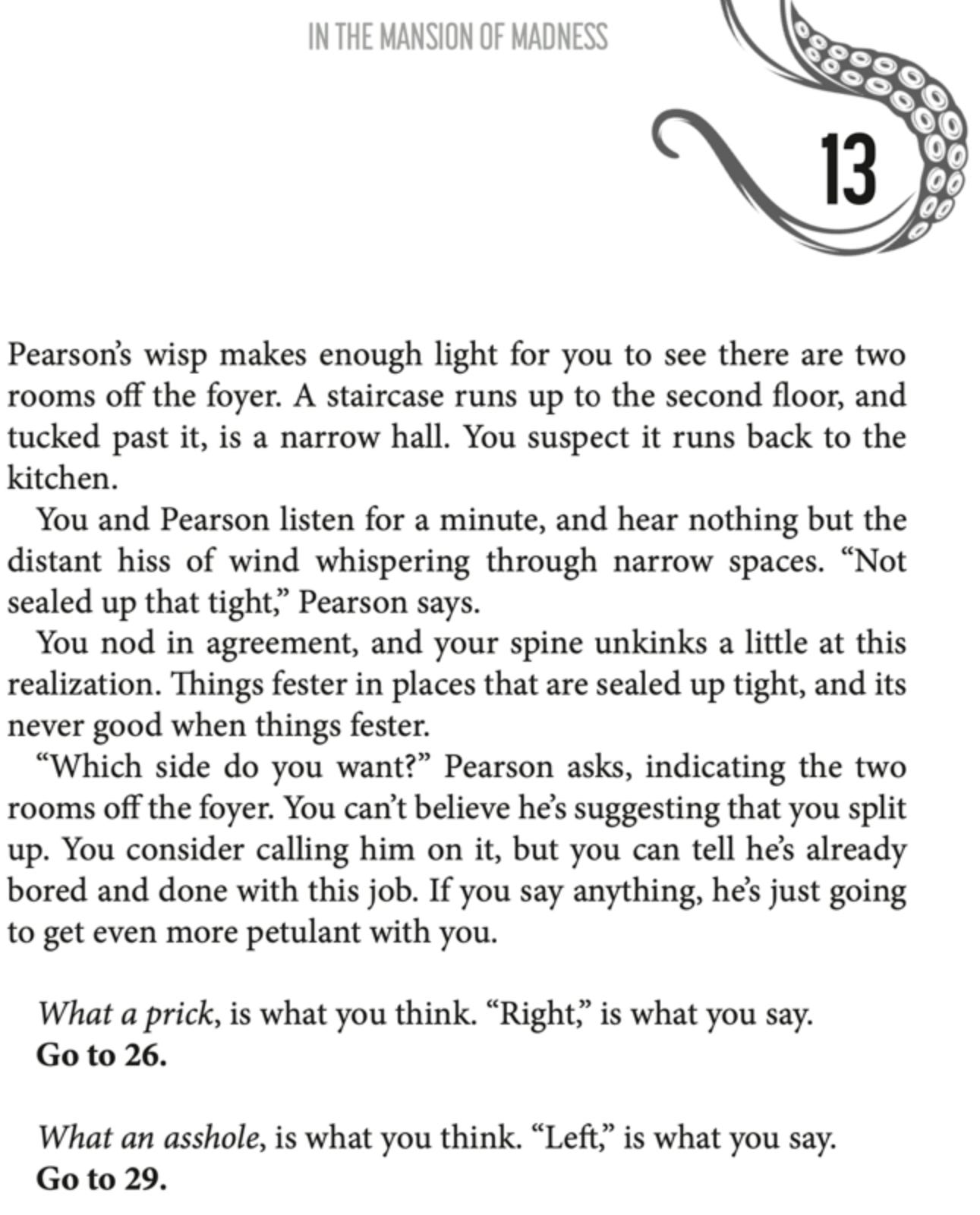Vortexting Our Way Into the Future
Wherein the author dances the "it funded!" dance and ruminates on what comes next.
The Vortext of Blood Kickstarter has reached its funding goal. Huzzah! I adore everyone who showed up for this thing. We are going to run off into the woods together on this new adventure. Well, more fun. We were already having fun. Now the fun is going to quintuple!
In the first two updates on the KS, I’ve noodled a bit about the constraints you usually find in these sorts of Pick Your Grisly Death adventures. Each node usually ends in a binary choice. Like this:
You can have more choices, but more only complicates the narrative. This binary choice—”right” or “left”—creates two issues: 1) you can run through this narrative twice before you’ve exhausted the possibilities, and 2) if you come back to this node again, you’re basically forcing the reader to revisit content that hasn’t changed, and which, frankly, is probably stale, in the sense that it doesn’t relate to their current state in the game.
Fundamentally, these sorts of games are “on rails,” if you will, and this is an on-going issue with solo play games. How do you make games that allow for a broader degree of movement (or, at least, the illusion thereof)?
Suppose there is a key somewhere else in the house that would allow you to unlock a special door in the foyer. How would that be written into this node? Probably with something like:
“If you have the Key of Ungamental-Ghosh, go to 47.”
Which gets complicated if you haven’t discovered the key yet, right? Now your journey through this house is tainted because your brain is looking for a thing which, narratively, you don’t know is there.
One way to hide this is to provide a different node that reads just like this one, but with key differences (haha!) because you have the key, but that becomes a shit-ton of cutting and pasting. It’s not very efficient (and I wrestled with this during The Cold Empty). What I want is some way to provide markers at certain spots that indicate unavailable options, but do so without wrecking the narrative flow.
I’m playing through God of War Ragnarok right now, and there are places where it is clear that you don’t have the tools to progress in a certain direction. You know you have to come back, but knowing isn’t the same as being spoiled.
The trick, I think, lies in the Major Arcana of the tarot. Vortext of Blood uses a tarot deck as its primary resource management tool, which gives me fifty-six cards across four suits. Sort of like this:
But there are also twenty-two Major Arcana cards which are going to be reserved for special use cases. Each card will have flavor text that describe use conditions. The Magician, for instance, may have text that reads: The Magician may be used to unlock certain doors. And now, instead of offering a spoiler about the Key of Ungamental-Ghosh, I simply say “If you have the Magician, go to 47.” You don’t know what the Magician does, but you know this node is where you could use it. And because you already know there are Major Arcana cards hidden throughout the game, I’m not spoiling anything by noting where they might be useful.
Of course, there might be more than one door that needs unlocking, and the card is single-use, so you have to decide which door you’re going to use it on. Aaah, resource management again.
Anyway, that’s where my brain has been this last week as we’ve been working towards funding on Vortext of Blood. Now that we’ve hit the magic number, I’m going to work on figuring out how to create an add-on for this campaign that will provide you with a full Vortext-styled tarot deck. Because, why not?
Vortext of Blood is running for another two weeks yet. There’s still time to tell your pals to come back it. Here’s the link: Vortext of Blood on Kickstarter.




Mark- I’ve never seen cards other than the average deck so already this was entertaining. Add to that: the possibility of using vortex as a verb. Very enlightening.